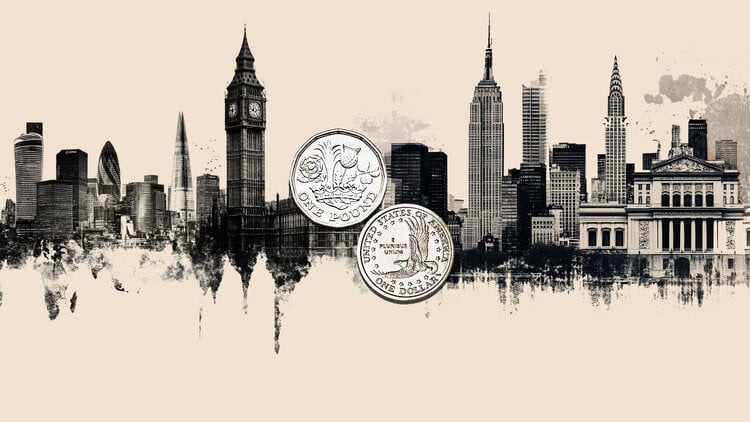- The DXY is seen with losses around 103.15, after reaching a high of 103.70, above the 200-day SMA.
- Fed Chair Powell warned that the Fed will raise rates again if necessary, maintaining its data-reliant approach.
- The US ISM Manufacturing PMI fell in November, as expected.
The US Dollar Index (USD) has shown a modest decline, trading at 103.15, despite Federal Reserve Chairman Jerome Powell’s hawkish stance. The November ISM Manufacturing PMI was lower than expected, but did not cause any significant downward movement in the Dollar. What appears to weaken the currency is that markets are not buying Powell’s hawkish stance.
Along these lines, despite the cooling of inflation and the mixed trend of the US labor market, the Fed was surprisingly less dovish, maintaining an open stance towards further tightening of monetary policy. Although important indicators of inflation, such as the Consumer Price Index (CPI) and Personal Consumption Expenditure (PCE), have shown a downward trend, the Fed has stated that it needs to see more signs of cooling inflation, leaving the door open to further hardening if necessary.
Daily movements in the markets: The Dollar operates with slight losses despite Powell’s warning to the markets
- In a speech at Spelman College on Friday, Chairman Powell said it is “premature” to say that monetary policy is tight enough and that the bank will raise rates again if necessary to reduce inflation.
- In terms of data, the Institute for Supply Management (ISM) Manufacturing PMI reported that the index stood at 46.7 in November, the same level as the previous data, but below the 47.6 expected.
- November retail sales will be released on Thursday and November nonfarm payrolls on Friday.
- US bond yields are trending lower, with the 2-, 5- and 10-year yields at 4.57%, 4.16% and 4.25%, respectively, appearing to limit the dollar’s gains.
- According to CME’s FedWatch tool, market expectations for the December meeting indicate that investors do not expect a rate hike. Additionally, swap markets are forecasting a rate cut in mid-2024.
Technical Analysis: Dollar selling momentum persists, DXY limited by 200-day SMA
The indicators on the daily chart paint a bearish picture for the US dollar. The positioning of the Relative Strength Index (RSI) underlines the strong selling momentum, while the negative bias in the Moving Average Convergence Histogram (MACD) further validates this bearish pressure.
In favor of the bears, the position of the DXY in relation to the simple moving averages (SMA) reinforces the bearish trajectory. With the DXY below the 20-day, 100-day, and 200-day SMAs, it is evident that buyers face an uphill battle against a prevailing downtrend.
Support levels: 103.10, 103.00, 102.90.
Resistance Levels: 103.60 (200-day SMA), 104.00, 104.20 (100-day SMA).
US Dollar FAQ
What is the US Dollar?
The United States Dollar (USD) is the official currency of the United States of America, and the “de facto” currency of a significant number of other countries where it is in circulation alongside local banknotes. According to 2022 data, it is the most traded currency in the world, with more than 88% of all global currency exchange operations, equivalent to an average of $6.6 trillion in daily transactions.
After World War II, the USD took over from the pound sterling as the world’s reserve currency.
How do the decisions of the Federal Reserve affect the Dollar?
The single most important factor influencing the value of the US Dollar is monetary policy, which is determined by the Federal Reserve (Fed). The Fed has two mandates: achieve price stability (control inflation) and promote full employment. Your main tool to achieve these two objectives is to adjust interest rates.
When prices rise too quickly and inflation exceeds the 2% target set by the Fed, the Fed raises rates, which favors the price of the dollar. When Inflation falls below 2% or the unemployment rate is too high, the Fed can lower interest rates, which weighs on the Dollar.
What is Quantitative Easing and how does it influence the Dollar?
In extreme situations, the Federal Reserve can also print more dollars and enact quantitative easing (QE). QE is the process by which the Fed substantially increases the flow of credit into a clogged financial system. This is an unconventional policy measure used when credit has dried up because banks do not lend to each other (for fear of counterparty default). It is a last resort when a simple lowering of interest rates is unlikely to achieve the necessary result. It was the Fed’s weapon of choice to combat the credit crunch that occurred during the Great Financial Crisis of 2008. It involves the Fed printing more dollars and using them to buy US government bonds, primarily from financial institutions. QE usually leads to a weakening of the US Dollar.
What is quantitative tightening and how does it influence the US dollar?
Quantitative tightening (QT) is the reverse process by which the Federal Reserve stops purchasing bonds from financial institutions and does not reinvest the principal of maturing portfolio securities in new purchases. It is usually positive for the US dollar.
Source: Fx Street
I am Joshua Winder, a senior-level journalist and editor at World Stock Market. I specialize in covering news related to the stock market and economic trends. With more than 8 years of experience in this field, I have become an expert in financial reporting.







